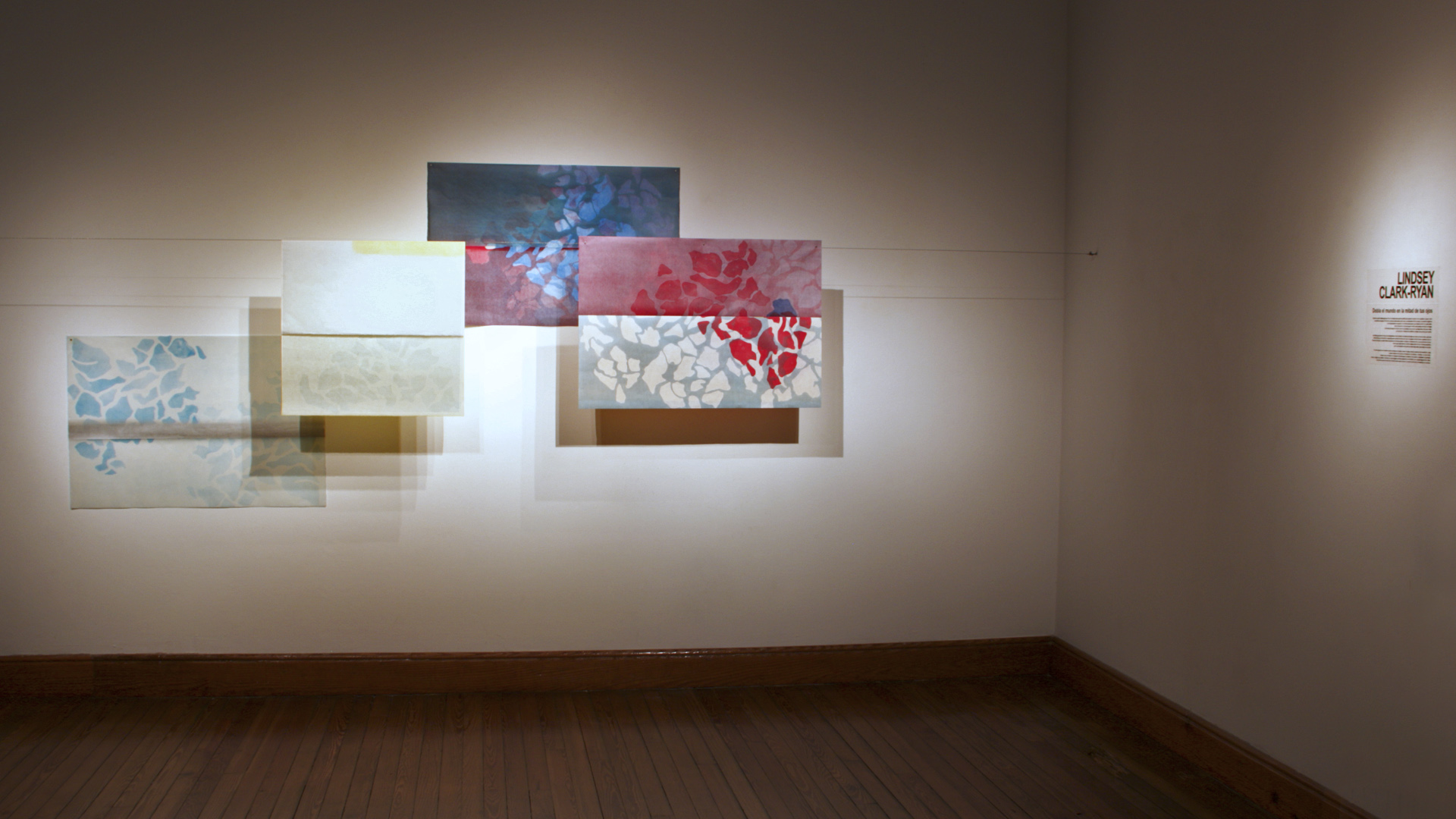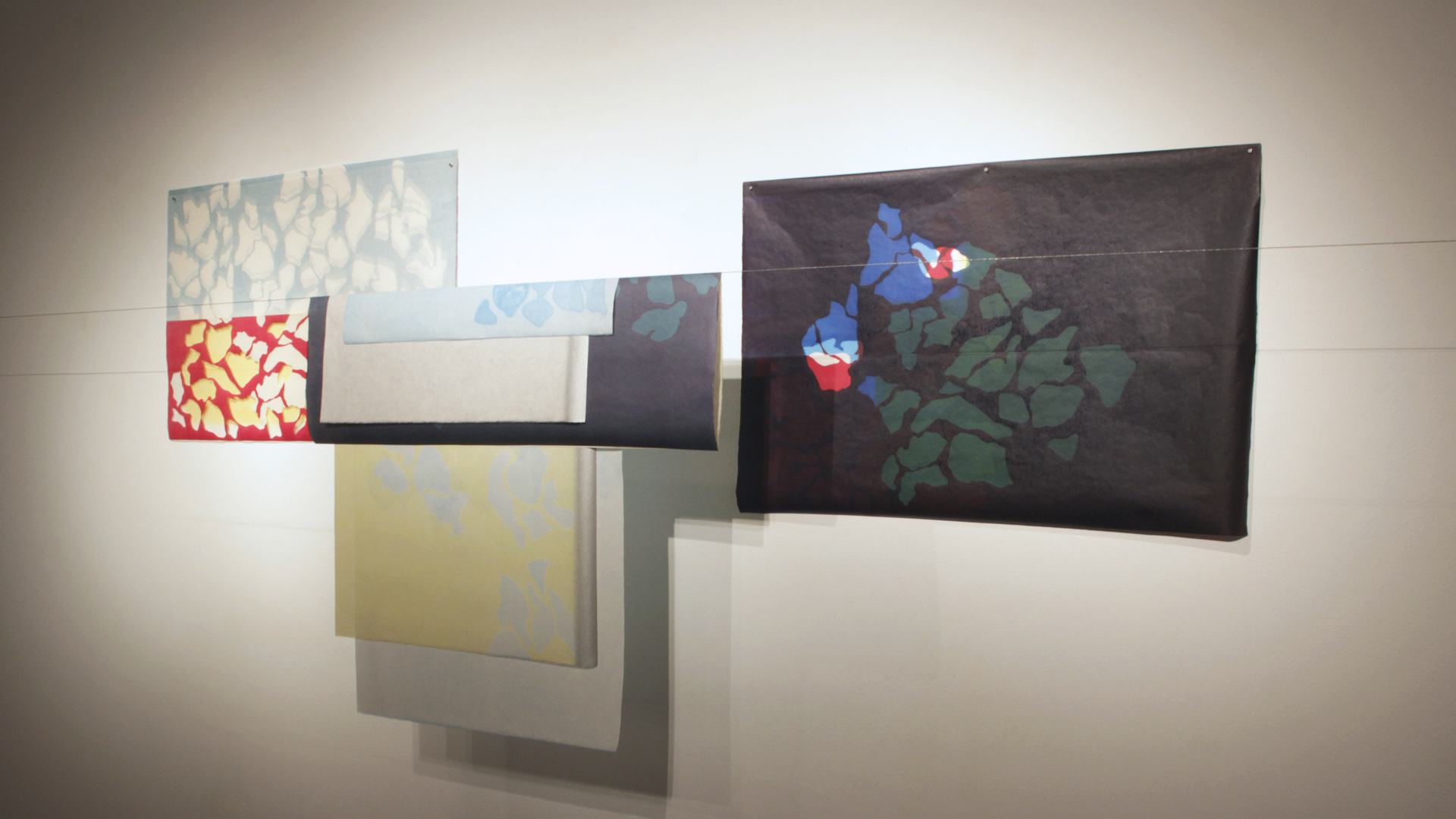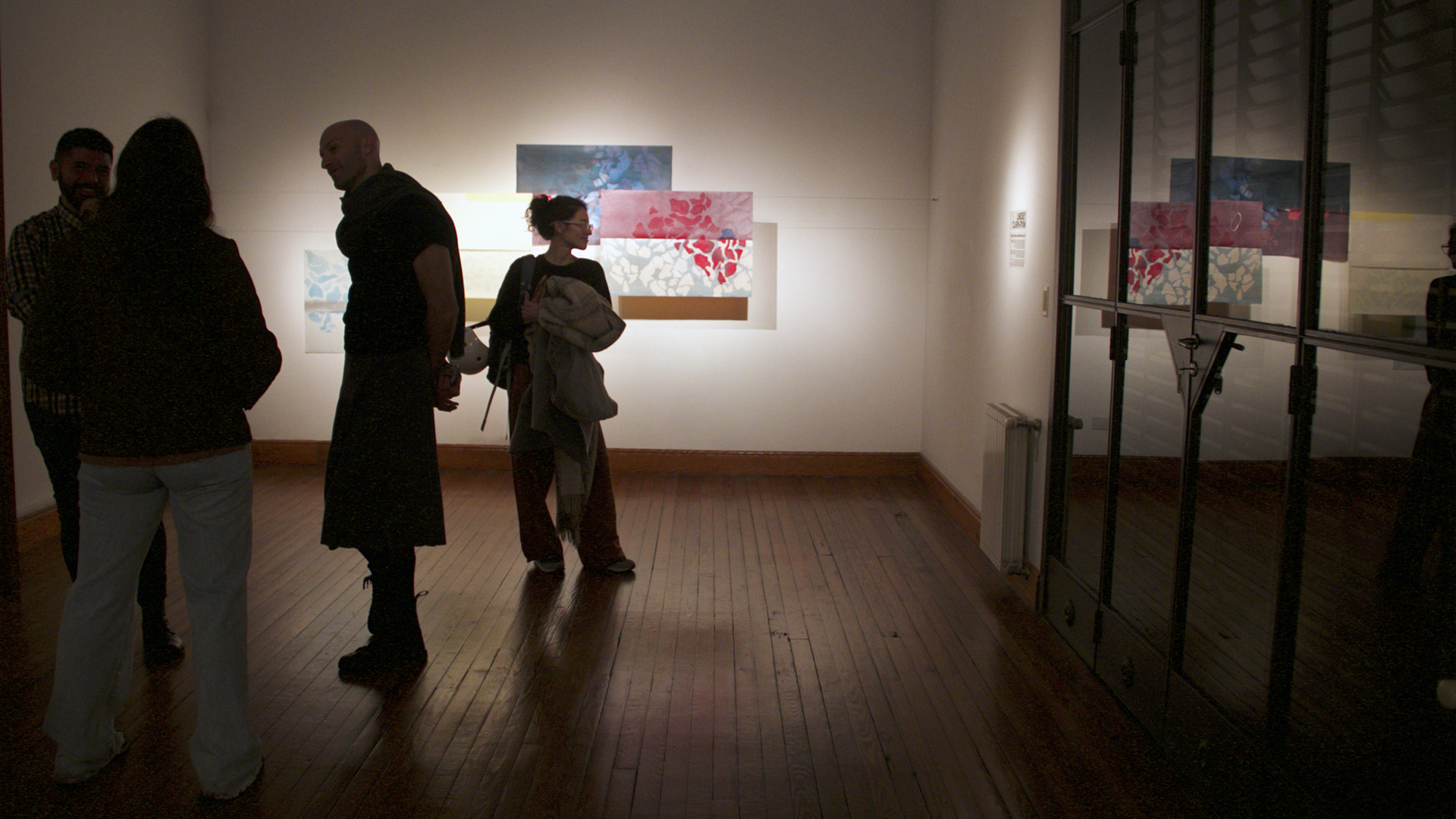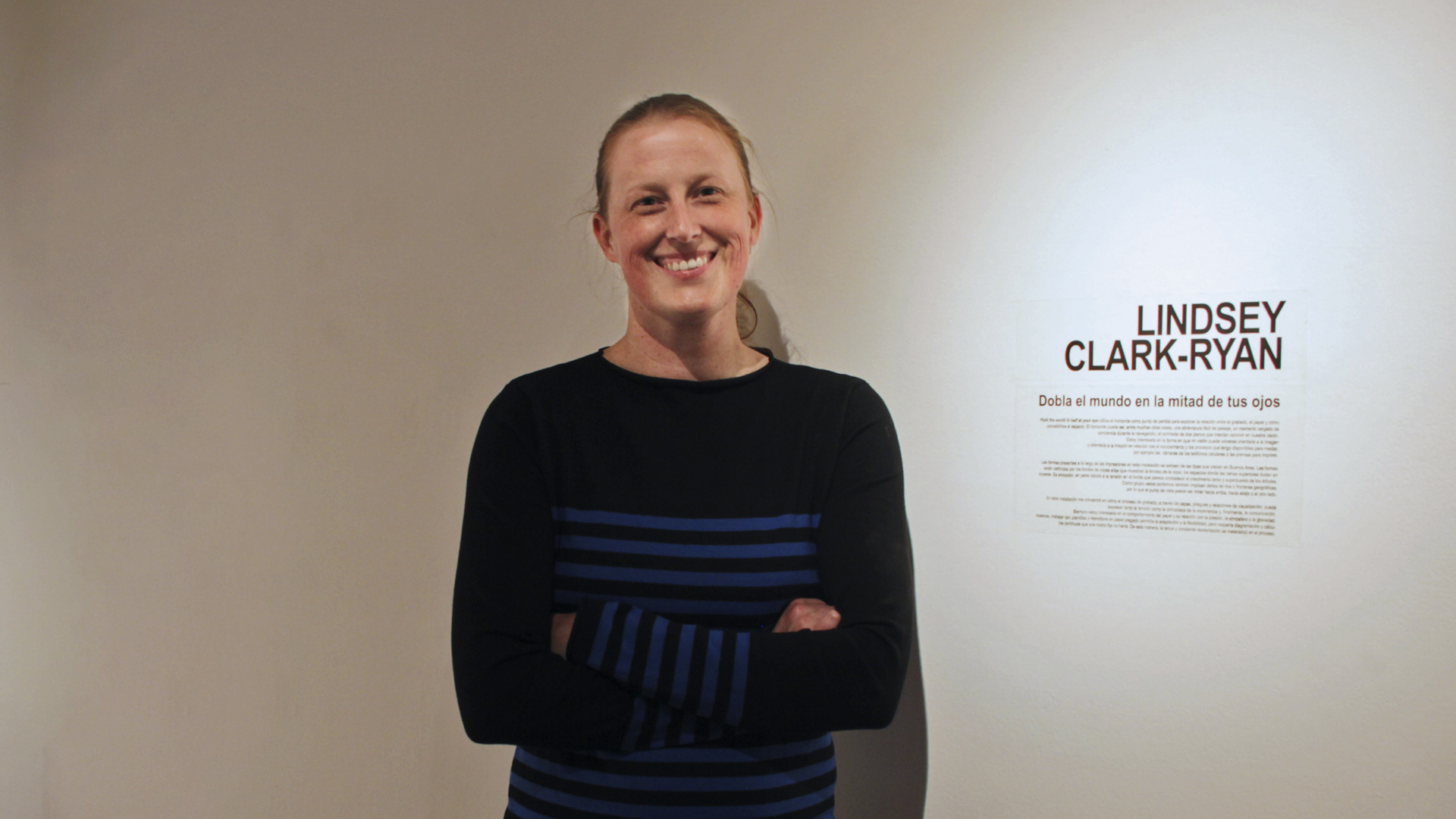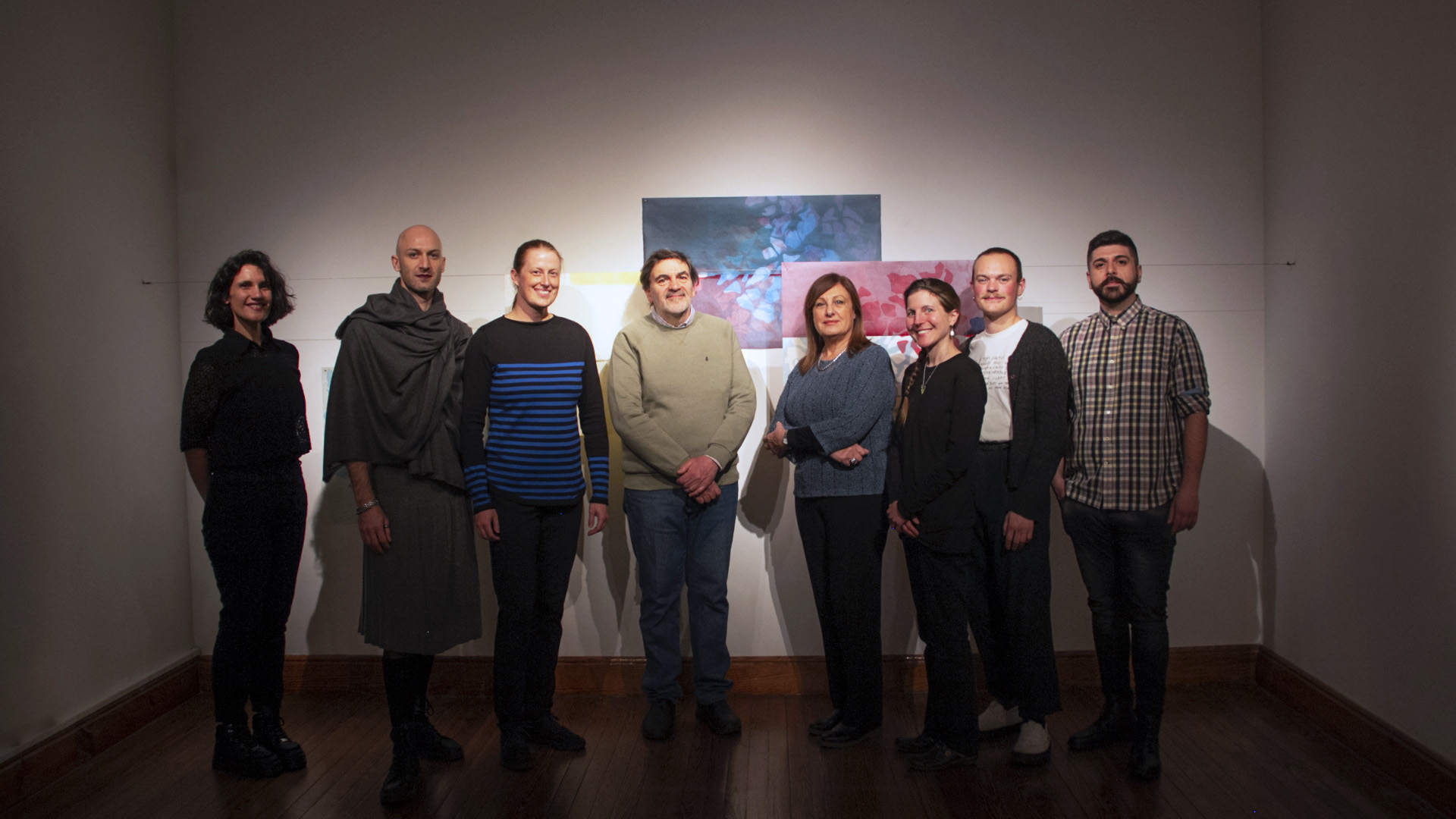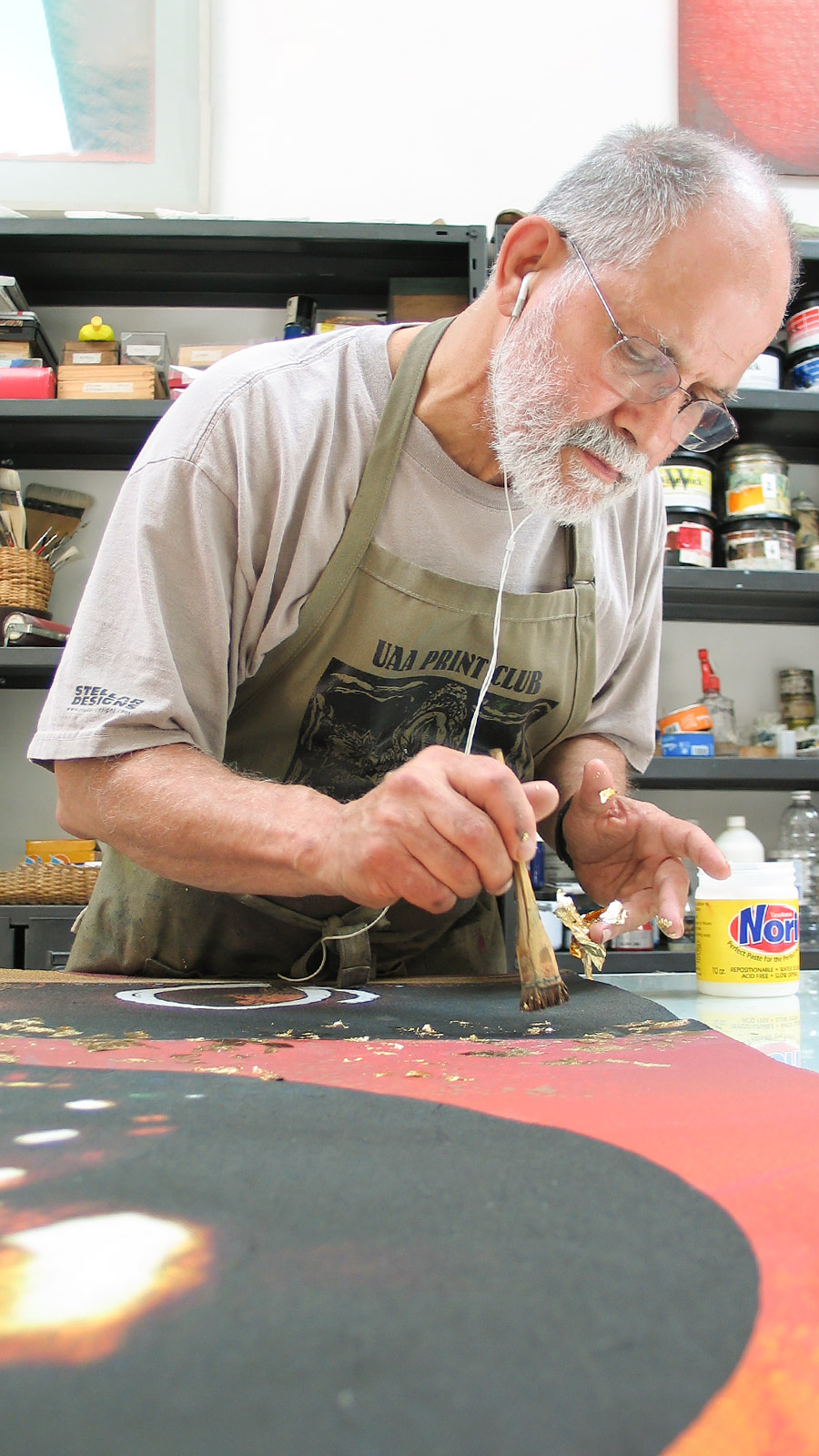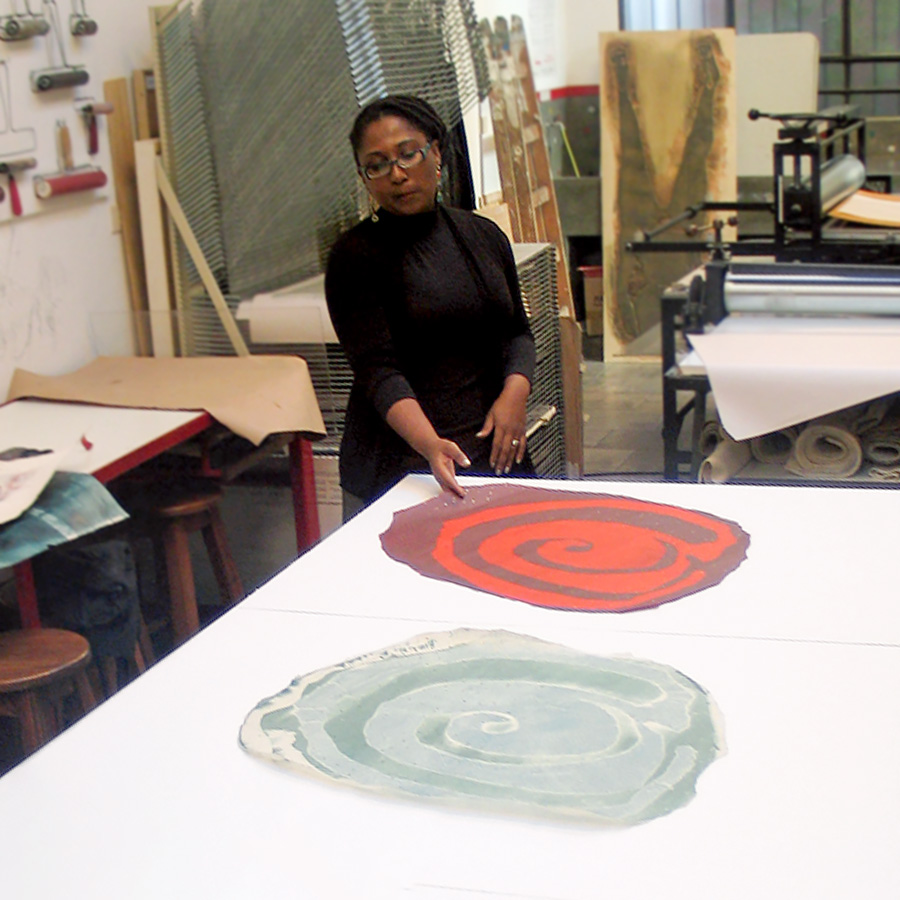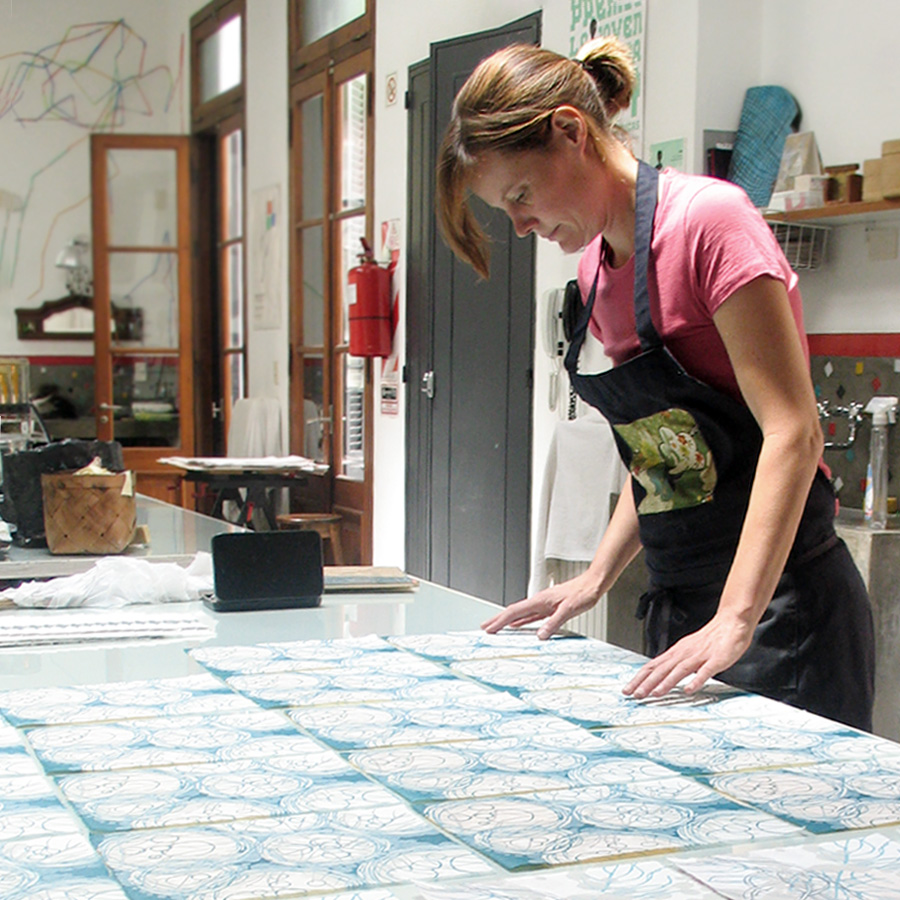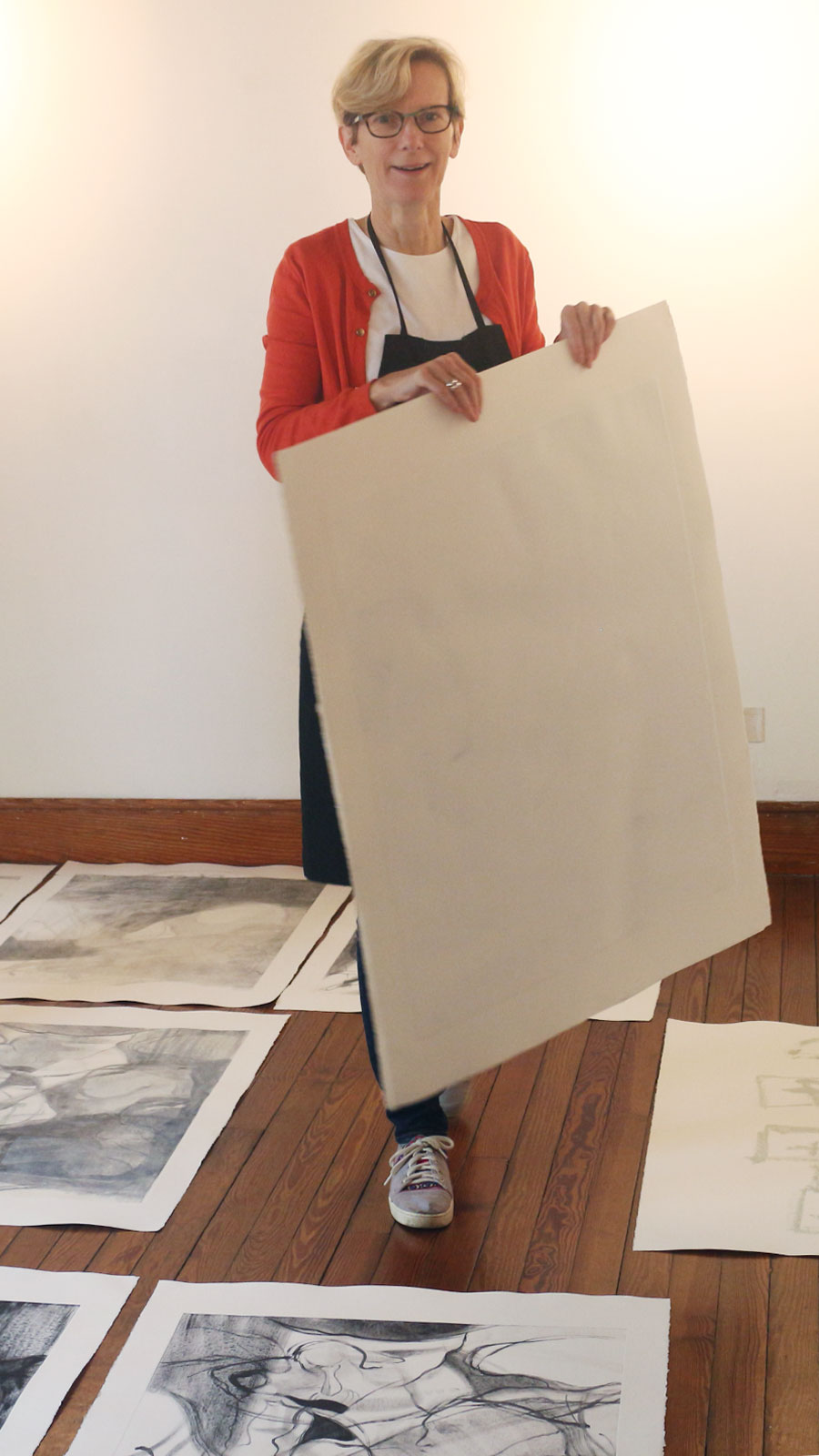Artists
United States of America
Lindsey Clark-Ryan
Fold the World in Half at your Eye
13.06.22 08.07.22
Lindsey Clark-Ryan is a multidisciplinary artist who lives and works in western Massachusetts, USA, where she is an Associate Professor of Art at Smith College. Her approach to printmaking and installation focuses on moments of fluctuation between two-dimensional graphic images and three-dimensional objects, between mobile and stationary, and between function and uselessness.
After participating in our online program Together Apart, Lindsey achieved her goal of traveling to Buenos Aires to do a Production Residency in our studio. Here, she roamed the city seeking inspiration for her Horizon project, in which she uses printmaking processes to emphasize how conventions of composition and “image-making” influence our ways of understanding one’s experiences and the field of vision.
ARTIST STATEMENT
Much of my artwork can be considered a collection of ongoing and accumulative projects. These are, in various ways, deadpan, interactive, additive, portable, or reconfigurable. Long-term, my approach might be likened to cultivating different mechanisms or frameworks for considering how to orient ourselves in the world. I am often thinking about how to steward and transform an art object that is continually and newly deployed and redeployed. Recently, I have been using the printmaking process as a means to explore the pictorial and navigational conventions of the horizon, one of our most prestigious illusions.
BIO
Lindsey Clark-Ryan
1982 | Bradenton, USA
Lives and works in Westhampton, USA
EDUCATION
2010 | MFA University of Wisconsin-Madison, USA
2004 | BFA Washington University in St. Louis, USA
EXHIBITIONS
2022 | Picture Window, Spazio SV—Centro Espositivo San Vidal I, Venice, Italy
2022 | Printmaking: A Social Practice, Gallery 1308—Wisconsin Union South, Madison, USA
2017 | Guide for Returning, DE-CONSTRUKT [projekts], New York, USA
2017 | North American Print Biennial, Lunder Arts Center, Cambridge, USA
2017 | Idols and Impossible Structures: New Prints, International Print Center, New York, USA
RESIDENCIES
2021 | FUTURE (Together Apart, online residency), Proyecto´ace, Buenos Aires, Argentina
2017 | DE-CONSTRUKT [projekts], USA
2015–2016 | Ayatana Artistic Research Program, Canada
2014 | Solo(s) Project House, USA
2013 | Elsewhere Museum, USA
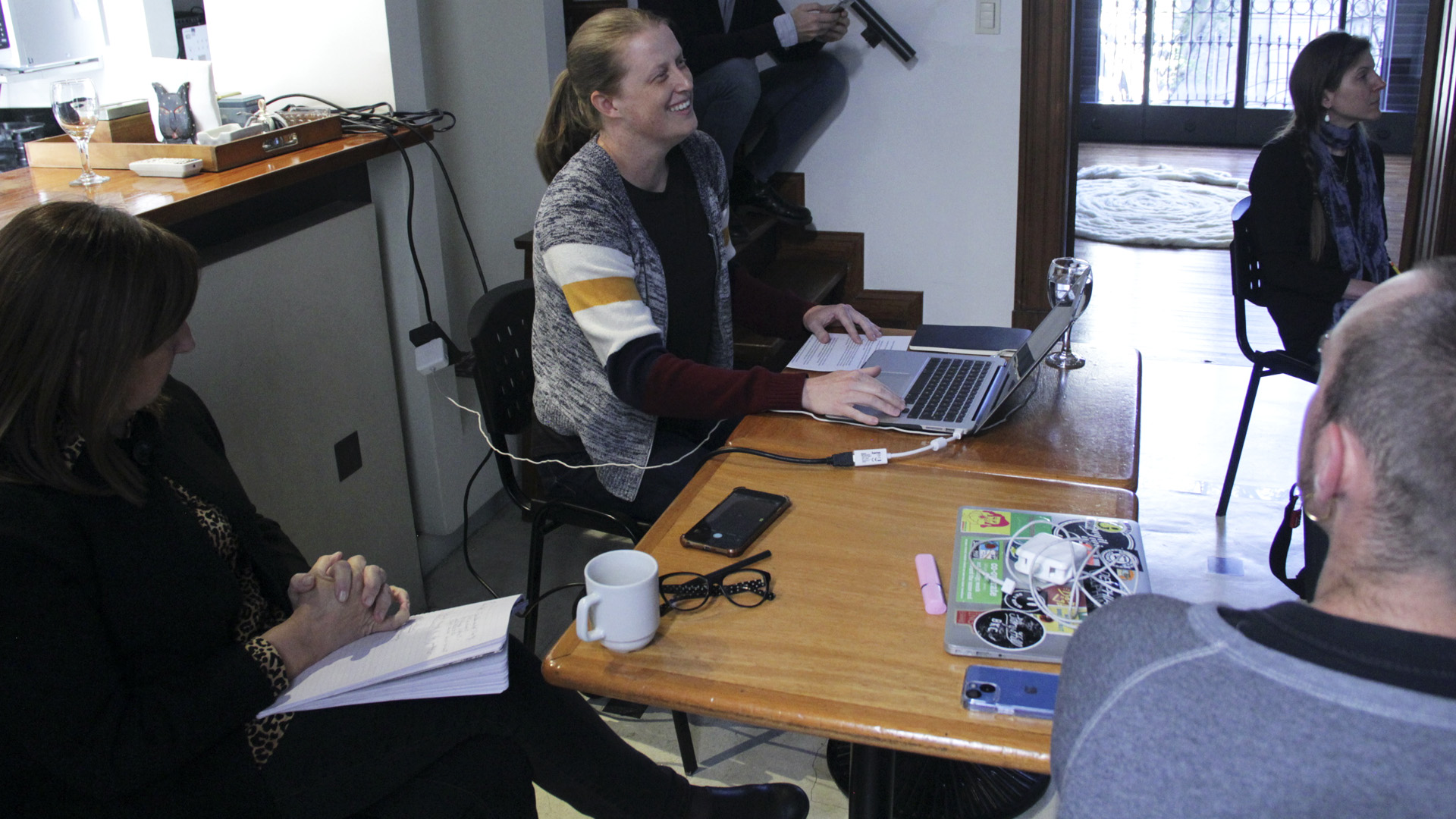
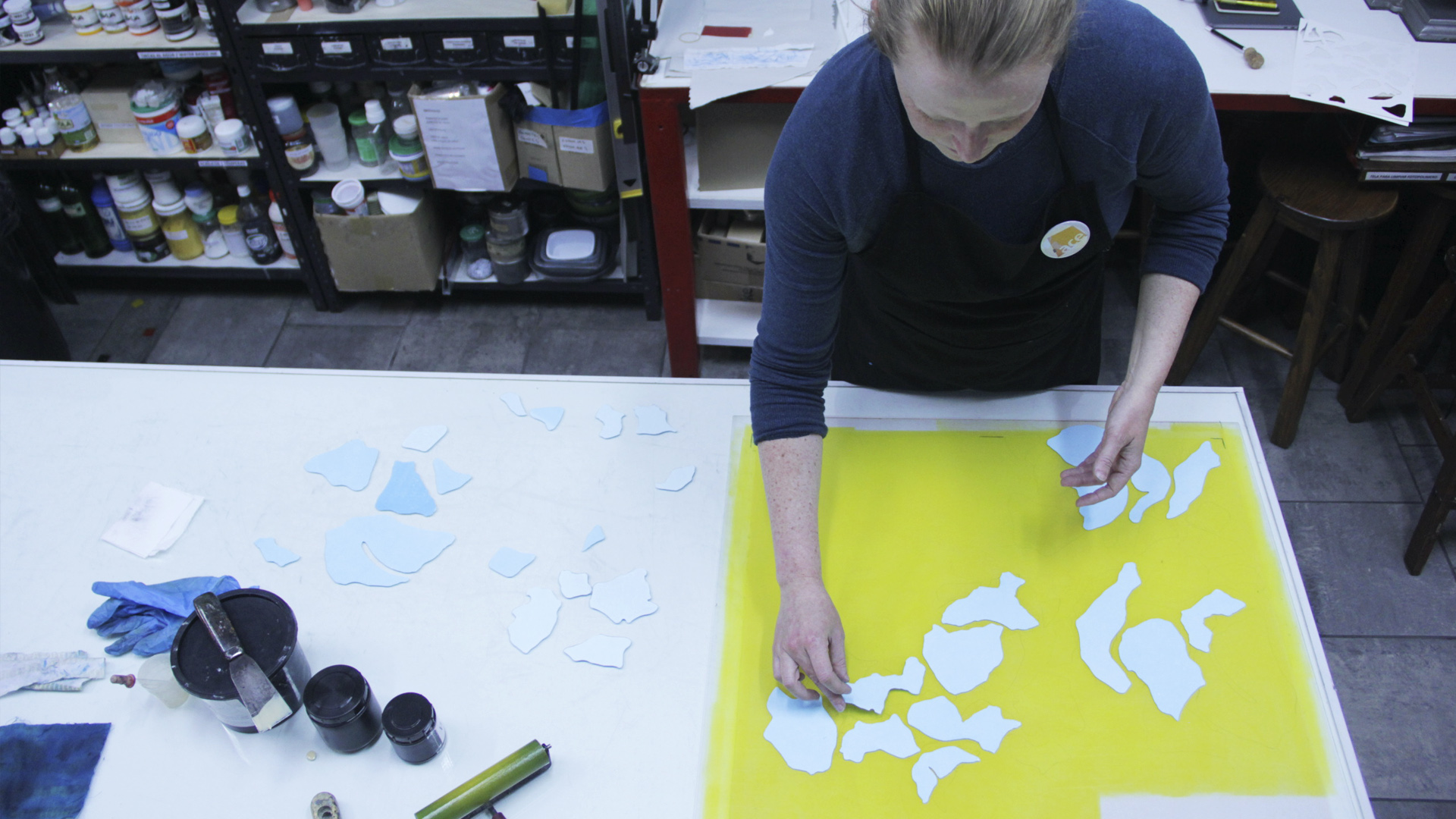
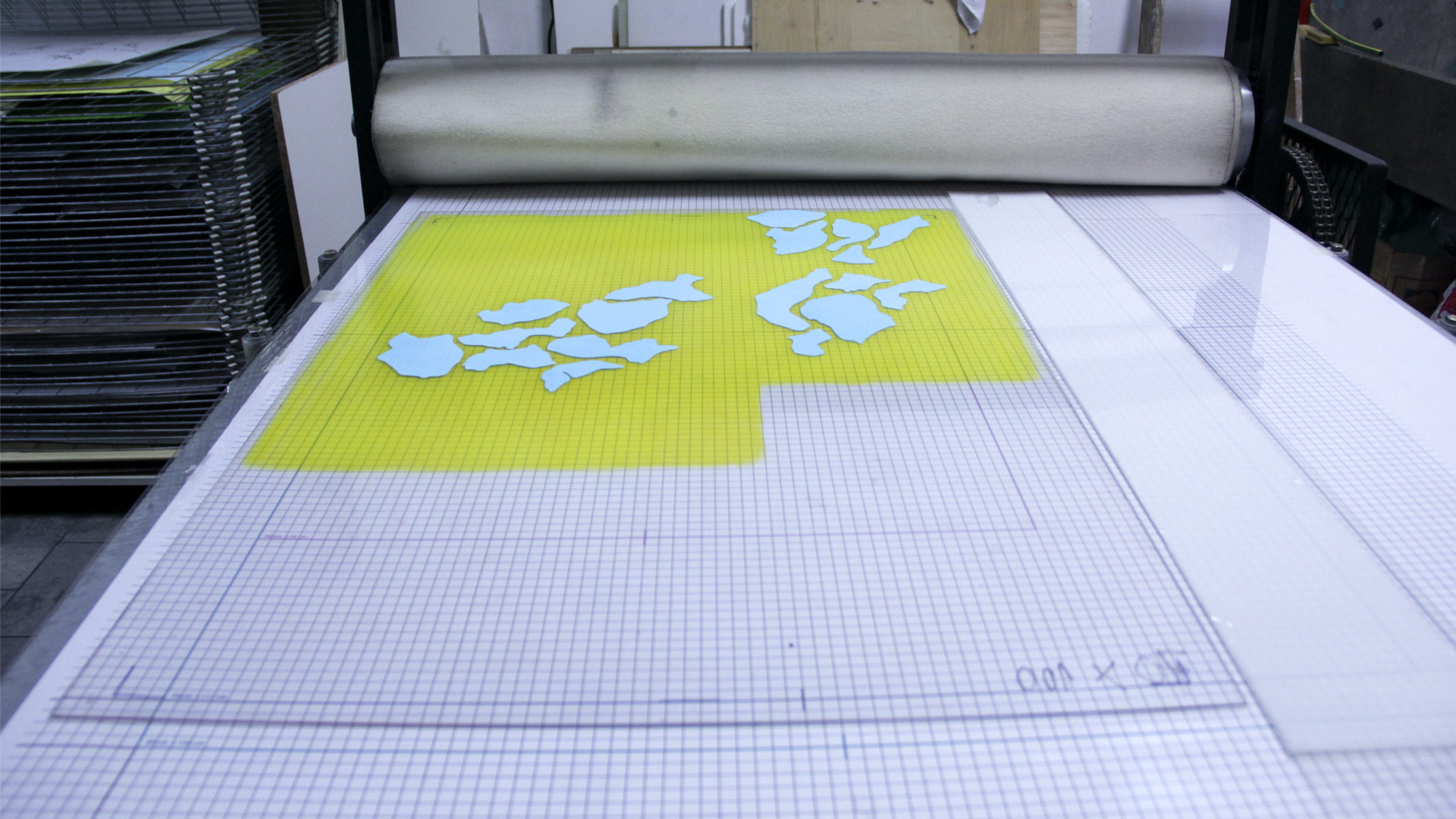
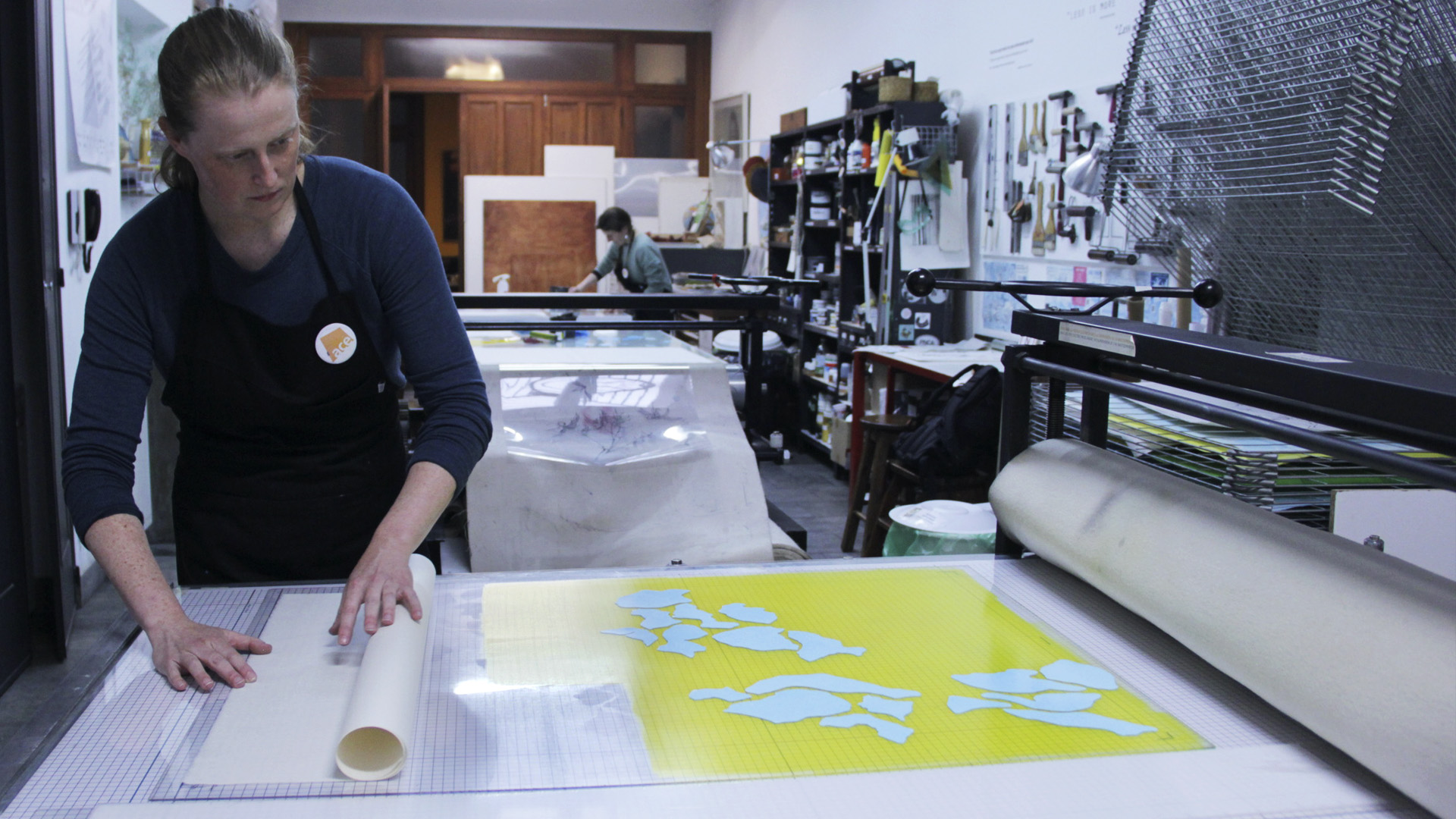
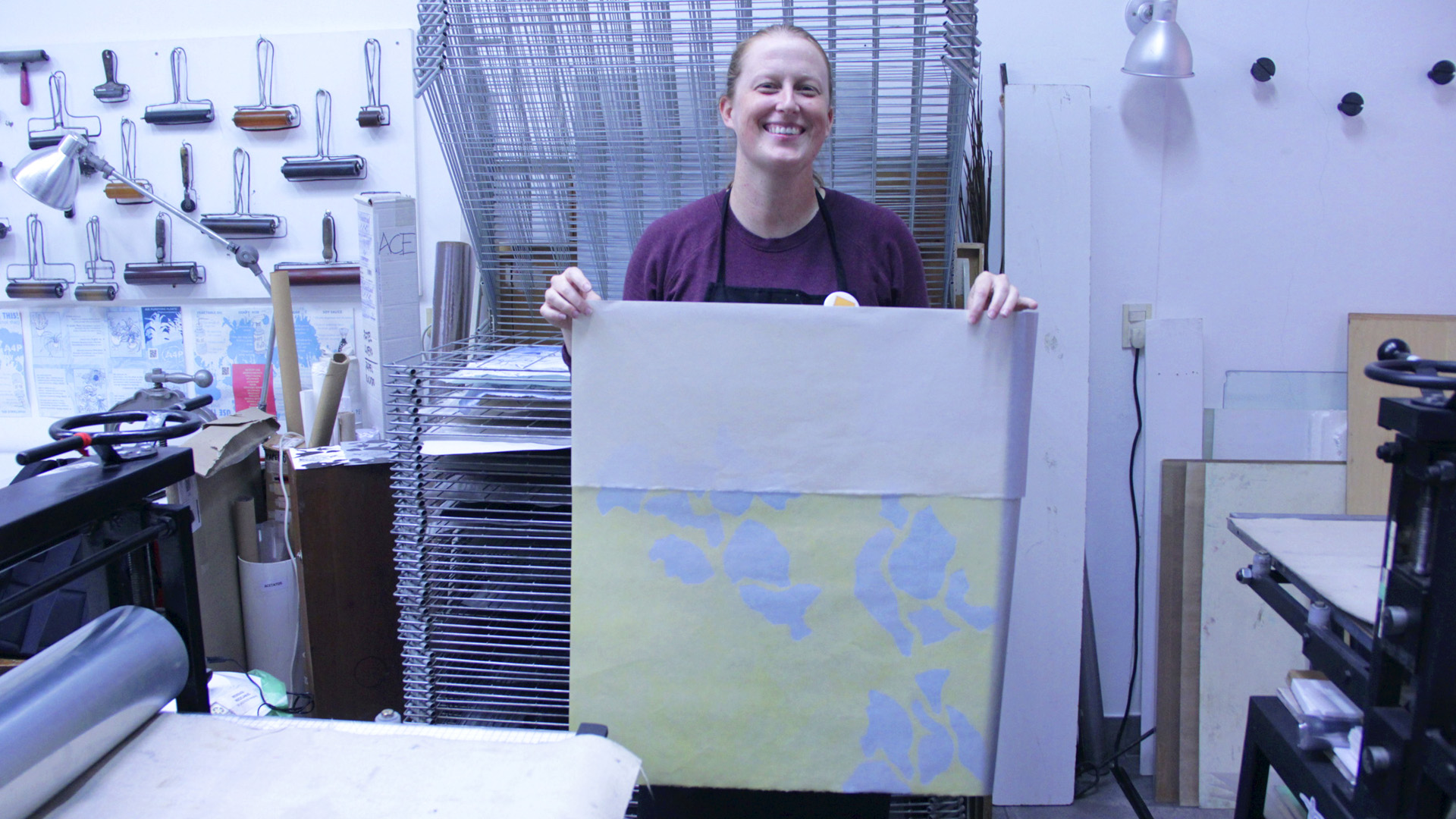
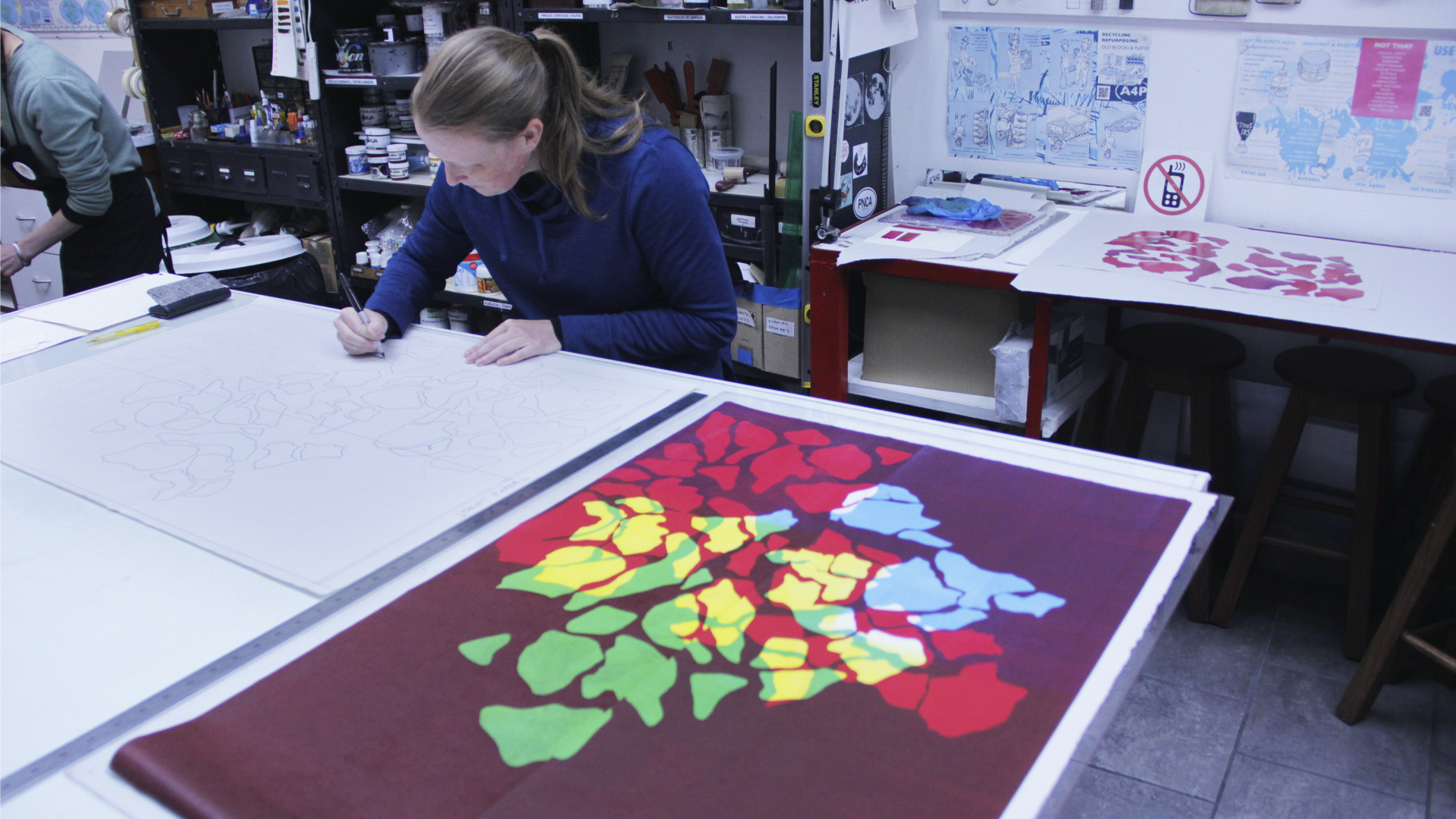
Related Activities
Exhibitions
Fold the world in half at your eye
Lindsey Clark-Ryan
06.07.22 05.08.22
Fold the world in half at your eye by Lindsey Clark-Ryan is the result of four weeks Exploration Residency among the ´acePIRAR Artist-in-Residence International Program.
Fold the world in half at your eye by Lindsey Clark-Ryan…
This work uses the horizon as a starting point to explore the relationship between printmaking, paper, and how we conceive of space. The horizon can be, among many other things, an easy shorthand for landscape, a charged moment of awareness during navigation, the contrast of two planes trying to coexist in our vision. I’m interested in the way my vision can become image-oriented or picture-oriented relative to the equipment and processes I have available to mediate it, e.g. phone cameras or printing presses.
The shapes present throughout the prints in this installation are drawn from las tipas growing throughout Buenos Aires. The forms are defined by the edges of tall canopies exhibiting crown shyness, the gaps where the upper branches hesitate to touch. It’s evocative, partly due to the tension at the edge that seems to belie the slow, overlapping growth of the trees. As a group, these contours also imply river deltas or geographical borders, so the point of view might be looking up, down, or across.
In this installation I focused on how the printmaking process—through layering, folds, and display relationships—can express both the tautness and delicacy of experience and, eventually, communication. I am always interested in the behavior of paper and its relationship to pressure, atmosphere, or gravity. Further, working with stencil and monotype on folded paper allowed for adaptation and flexibility, but required continuous diagramming and calculation that a fixed matrix would not. In this way, the tenuousness and constant reorientation was embodied in the process.
